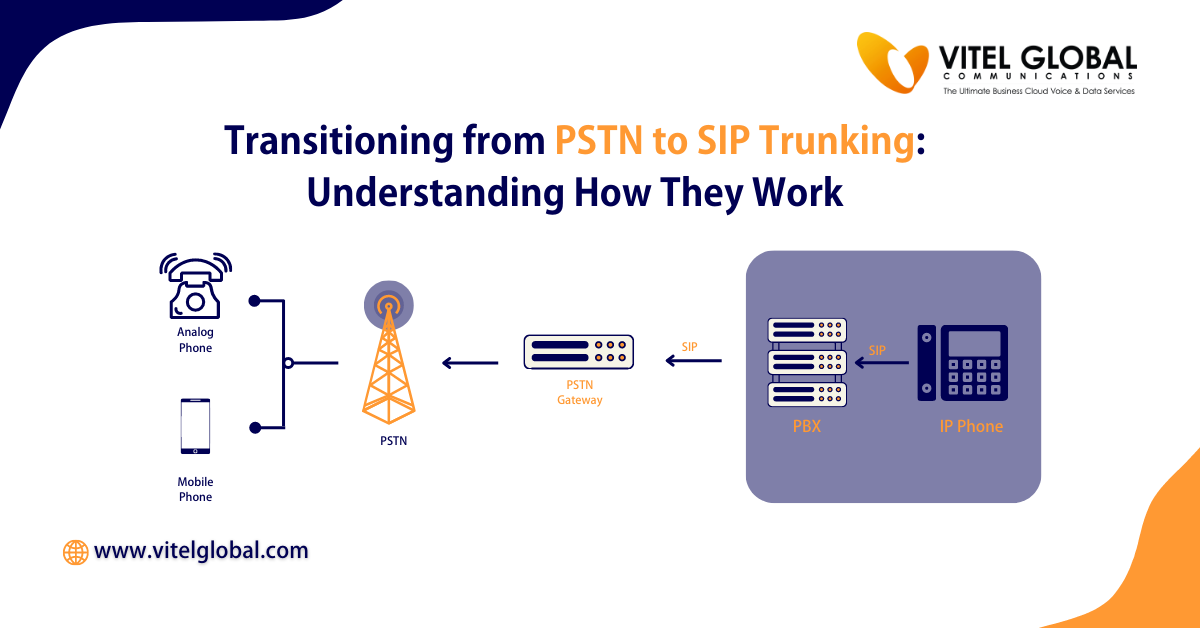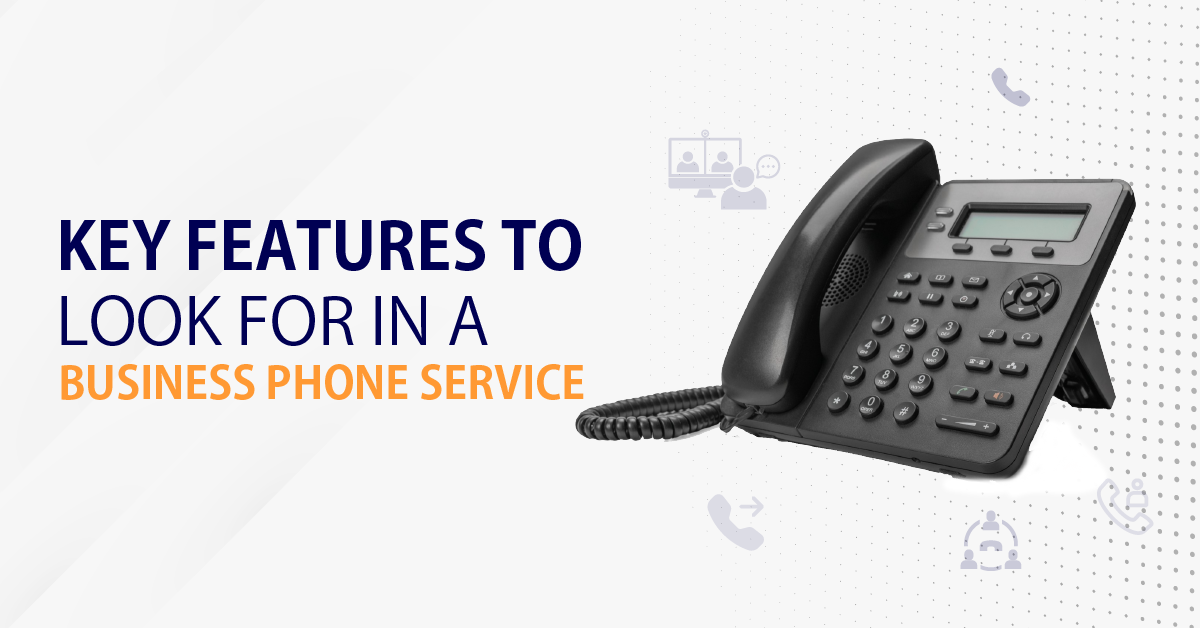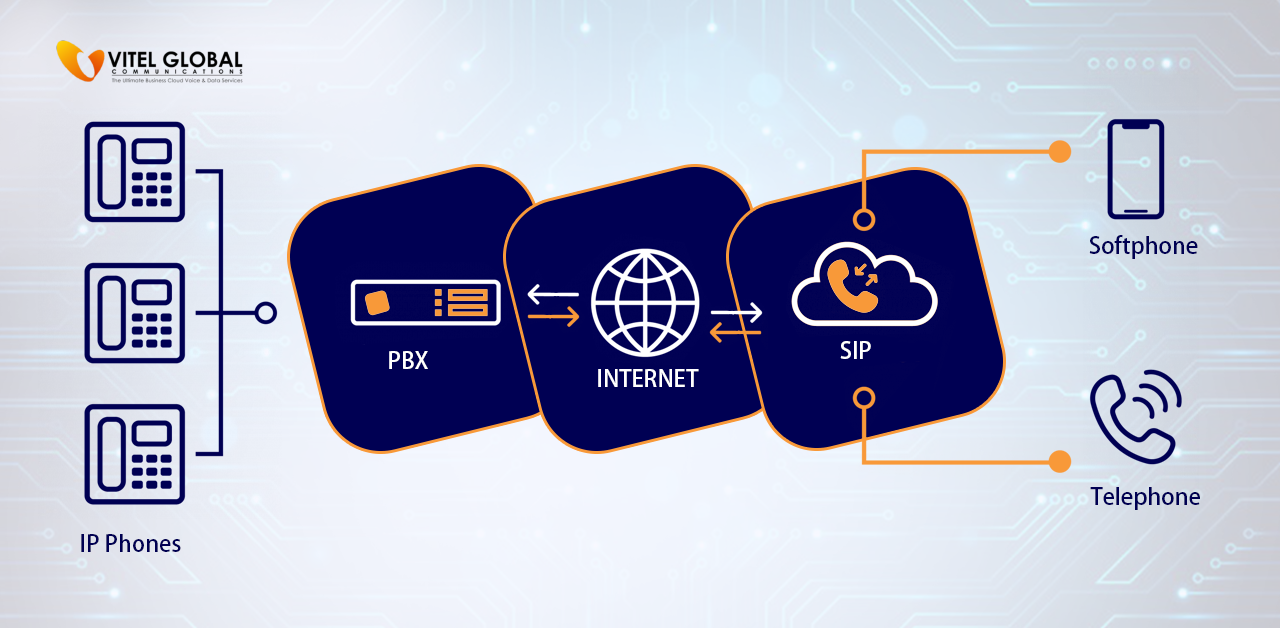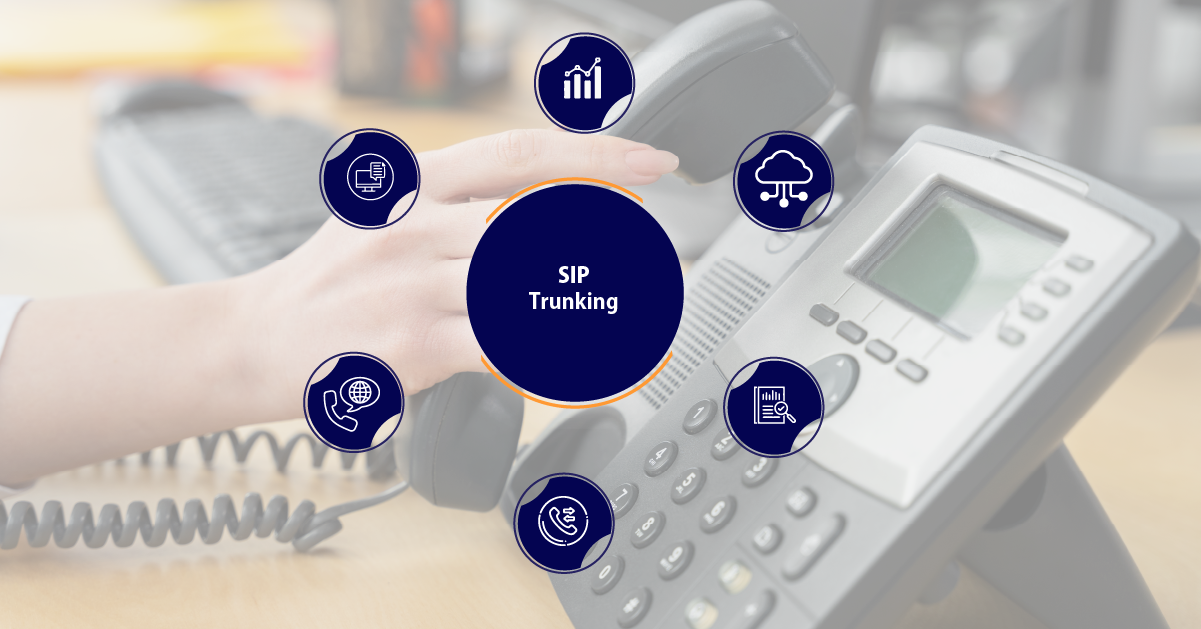SIP Trunking vs PSTN: What’s Best for Your Business?
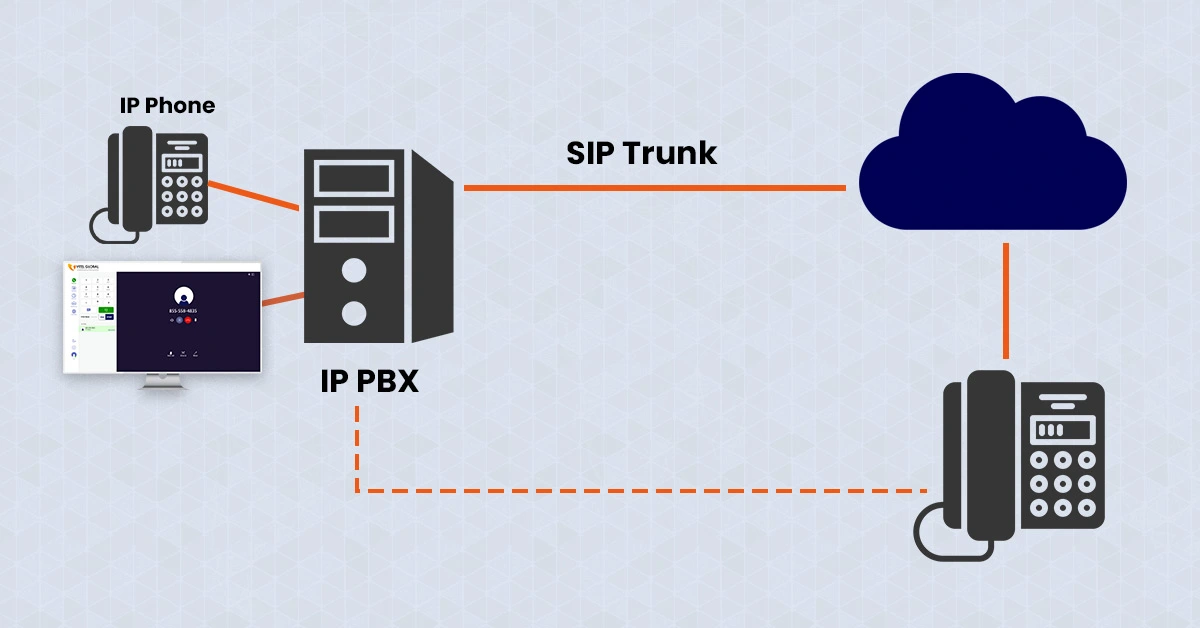
5 min read
The following blog will cover SIP Trunking Vs PSTN of telephony networks in detail as well as provide some insight into the advantages they have over one another. Hopefully, you will feel better informed on this topic and can make a more educated decision.
Unfortunately, the telephone system is getting more and more outdated. The “landline” has been replaced by cell phones, so traditional phone numbers are going away.
To keep your business afloat and operational, you must consider switching to a new type of phone system. One such option is a SIP solution for corporates. However, before trying this new technology out on your company’s lines, you must understand what pros and cons there are to each option.
Introduction
You hear the term “trunking” a lot these days, but what does it mean? When you’re trying to decide if SIP trunking or a PSTN connection is right for your business. You should know the pros and cons of each type of network. Let us see what makes these competing technologies so different so that you can make an informed decision on which kind of connection to choose for your company.
The PSTN is made up of analog lines that route signals in a circuit-switched fashion across long-distance areas. The phone line connects directly to individual terminals and uses the + sign at the beginning of every call as an indicator that it’s being made over a phone line. This is called a Signaling System and the entire process happens without any physical representation of the voice data.
SIP trunking, on the other hand, uses the Session Initiation Protocol to send messages over an IP network. The entire signaling process is done in-band instead of out-of-band and transmits data both ways so that audio can take place. However, PSTN still has the edge because it’s more cost-effective. SIP trunking saves money in the long run because it doesn’t use costly equipment and requires fewer employees to manage it. Most companies prefer having a single point of contact when they’re making international phone calls.
SIP Trunking is the latest and best way to set up a phone system for your business. So why are there so many still using PSTN instead? We did a deep dive into why SIP Trunking is so much better than PSTN. And what you need to know to make an informed decision on which you should be using for your business today.
What Sip Trunk Providers Offer that Traditional Phone Carriers Don’t?
The level of flexibility that new providers offer in their pricing structures means they can give you more bang for your buck. Not only that, they also offer advanced features that traditional carriers don’t have.
So What Are These Features?
Here’s our list of the top 10 reasons to switch from traditional Phone Carriers to SIP Trunking providers and why you should.
SMS Inbound Notifications
SMS notifications for incoming calls in a way that doesn’t require you to have a phone line! This means you can receive and act on SMS notifications without having a regular phone line. Business Phone Service providers help you save money by not having a landline needed to connect to your business.
No More Dropped Calls
No more long-winded explanations to clients as to why they can’t call you back because you’re on a landline. Make your office accessible even when you can’t be there in person with mobility services such as voice carry-over (VCO), email, and fax.
No Contamination
Outgoing calls are not connected through your phone. Your voice is not heard by other users of that phone number and vice versa. This prevents a mishap with inter-operator interference which allows you to use the same account number as another business.
No Contention
If your outbound calls are on an IP network, then there is no contention over the outgoing connection, your call will always be connected. This results in extremely low call drops when compared to traditional PSTN connections. (We have many customers who have dropped more than 90% using traditional PSTN).
No Long Distance Charges
Calls are all local calls. There are no long-distance charges and there are no hidden fees per minute of usage. A new feature that Cloud Sip trunk providers offer is call parking. It allows you to park an incoming call until you’re back in communications. This way, you can deal with the call without interrupting other customers.
No Call Costs
SIP trunking services have extremely low cost-per-minute rates, as low as 6c per minute making it cheaper than traditional PSTN connections. Unlimited Free incoming and free outgoing calls on any mobile and landline worldwide.
Invoicing Is Straightforward
All calls are in real-time allowing you to see at a glance your monthly spend and call costs. No guesswork and no hidden charges.
Better Security
With trunks, you share a common number with other users of your account. This means that if the service provider is hacked, your calls will be “tainted” and may be subject to higher fees.
Cutting Edge Technology
SIP is not POTS, SIP trunking is the future of telecom technology. Small Business phone service providers only use state-of-the-art equipment for your business communications.
Customization
With SIP trunking you can customize the type of service to suit your contacts ensuring that each customer has a dedicated number. Having a different service on each line ensures all parties have their dedicated call routing numbers. Which reduces the risk of contamination and contention over shared resources such as IP voice lines.
Unblock Your PSTN Line
The chances of you being able to unblock your phone line are low. You need to be a business that uses a lot of phone lines, as well as have a high-level customer base. Traditional Carriers don’t offer this and most providers don’t even respond if you call them up, no matter how good their deals are.
VoIP Roaming
Not only do Cloud Sip trunk providers allow you to take calls from anywhere in the world! They also have the time and effort to set up roaming capabilities that traditional providers just don’t support.
Call Forwarding
Call Forwarding means that incoming calls will forward to another party, rather than the person who answered the phone. It’s much more efficient, and it also helps get rid of annoying telemarketers!
Telephony service through traditional phone lines is expensive, especially for those companies that need a large amount of calls at a fast pace in an office environment. There is a lot more to traditional phone lines than just the price of the line itself. Not only are traditional phone lines expensive for businesses. They are also quite difficult for small business owners and managers to follow and understand.
Traditional telecom companies charge you not only for the physical infrastructure. But they also make it difficult for you to understand the price structure they impose on you so that when it comes time to renew your contract or package.
Conclusion
With the increasing amount of people going online through a desktop or laptop. There is also an increase in the use of VoIP and SIP trunking. The main advantage of using VoIP and SIP trunking over traditional phone lines is that you can save money if you have many calls per month. You can install it on your computer or server, which will save you even more money. Sip solution for corporates is also a much simpler system to manage than traditional phone lines are, with all of their confusing prices and packages. VoIP might be cheaper than traditional phone lines.
Published: January 2nd, 2024
Subscribe to Our Latest Updates
Get monthly product and feature updates, the latest industry news, and more!

